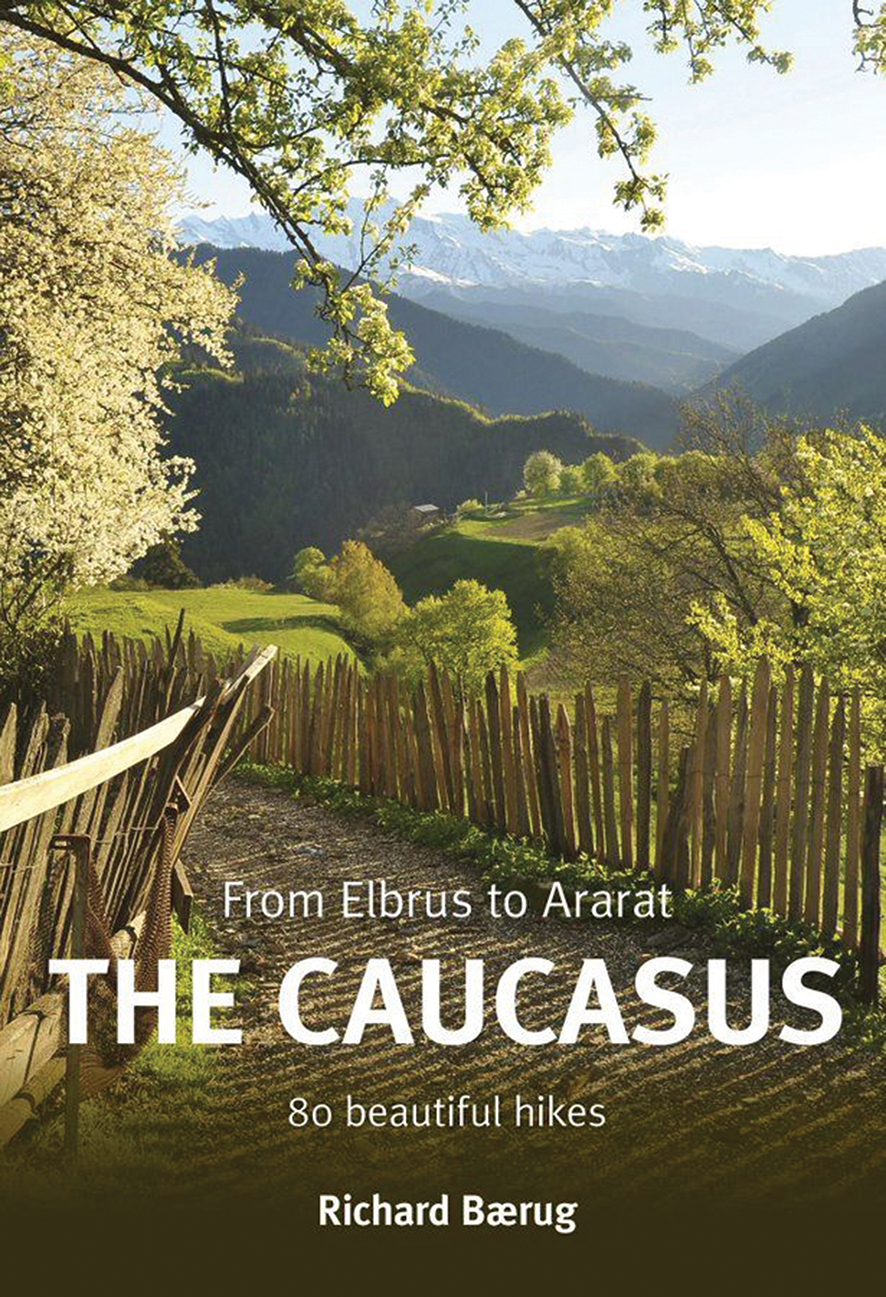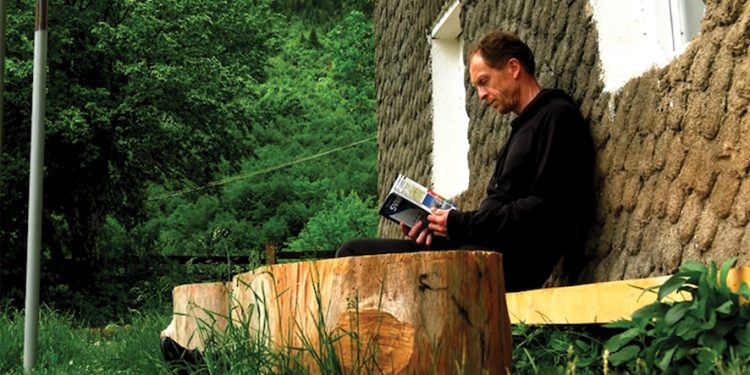To commemorate and draw attention to the lesser-known hikes and trails in the Caucasus region, a new book, ‘From Elbrus to Ararat, The Caucasus – 80 Beautiful Hikes’ highlights spots to visit in Turkey, Azerbaijan, Armenia, and Georgia.
Richard Baerug, a Norweigan with many titles, among them hiker, skier and author, moved to Svaneti years ago after falling in love with the region. He runs the Ushba Grand Hotel located in Becho village. Baerug was inspired to write ‘The Caucasus – 80 Beautiful Hikes’ after he had lived in Georgia a while and really discovered the Caucasus, feeling there were better places to hike than the traditional tourist spots.
“I write about the greater possibilities, because I believe many hikes are more beautiful [than those traditionally offered], and you have this unique opportunity to be at one with nature. If you’re not afraid of nature, why go where everybody else goes?” Baerug says.
The book had its launch party on March 1 with the National Trust of Georgia. The National Trust is an organization that was adopted after the British model and aims to save and restore historical sites within the country to preserve the buildings or land for generations to come. These sites are then turned into tourist venues or workspaces for people to use.
All the hikes depicted in the book were personally hiked by Baerug, and he took many of the photographs included. Each hike has a legend paired with it, and includes difficulty levels, the time it takes to complete, elevation level, and GPS data. Additionally, Baerug included where you could go wrong on the trails and how to find your way back, because he felt most guides do not explain what to do if someone has wandered off the path.
He also includes some tips about things he should have done when hiking the paths, so others can be prepared when they go.
“Recommenders don’t always write about what they did, but also what they didn’t do,” Baerug notes.

Even though the book is a guide to hikes in the region, it also includes other standpoints, such as short stories, historical attributes, tips, and nature evaluations. In the book, Baerug describes the various flowers in the Caucasus and the colors of the trees and forests during different seasons. Since he lives in Svaneti and has a natural draw to that area of Georgia, he said 1/3 of the ‘Georgian Hikes’ are in Svaneti.
While presenting, he said he has met several interesting people in Svaneti, whom he wrote about in the book. He features interactions with a family on a farm and how they live, a famous ‘Svanetian milker’, and the story of a nun who is single handedly renovating a church. Baerug also noted that in the book he wrote a lot of information about Kazbegi from a cultural standpoint.
During the book launch, he told the story about the beginning of time, how Georgia is considered land given by God, and that the location of the Garden of Eden is said to be near Svaneti, the ‘epicenter of the world.’ Baerug also told the story of Armenia and how in the year 301 AD they became the first Christian country in the region, because of their king, who turned to religion to be healed.
Baerug also writes about the geography of the Caucasus and whether it is considered Europe or Asia, the fact that there are at least 50 languages spoken within the region, and useful phrases to use in the local languages when visiting these countries. He said he couldn’t include as many hikes as he would have liked in Azerbaijan because of the land restriction. That is why there are a minimal number of hikes for the country – he flew there once and could only complete so many.
Other people in attendance at the event included Peter Nasmyth, author and contributor to the National Trust of Georgia, who spends his time between London and Georgia. He expressed his regard for Baerug during the launch by explaining that most people just come to places, such as Georgia, to visit, but Baerug is an exception.
No one could have done it better,” said Nasmyth. “He’s one of the expats who didn’t just come to the country, he did something. He built something.”
Baerug first visited Georgia as a tour guide for a company he was working for. He stepped in for a job in Kazbegi and had to memorize all the plants, animals, trees, etc. to explain to those who joined the hike. Since he was taking someone’s place, he learned in one day what a traditional guide would learn in a week.
Then, in 2009, he came back to Georgia as a part of a summer course. The group was on schedule to visit Svaneti, but the trip was canceled due to inconvenient weather conditions. However, he heard Georgians telling stories about Svaneti and how wonderful it was, that he couldn’t forget, and scheduled another trip to Svaneti later that year.
While he was on a hike, his guide talked about his family and how they had moved from their house in the late 80s and wanted to convert it into a hotel, they were just waiting for a sponsor. Baerug saw this opportunity and took it, which led him to where he is today.
The Ambassador of Norway Bergljot Hovland was also at the event. She described Baerug’s book as “Not only the life of the mountains, but the façade of lives.”
With this book, Baerug hopes to model what will happen in the future based on the past ten years. He shared his hopes to send people in more directions in the Caucasus regarding hikes, so that instead of not seeing anyone, people can see two to four people on their hikes. Right now, if a person were to hike 90% of the trails Baerug listed in his book, there would be no one around, however, Baerug hopes that percentage will get down to 70% within the next ten years.
By Shelbi R. Ankiewicz














